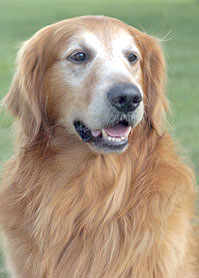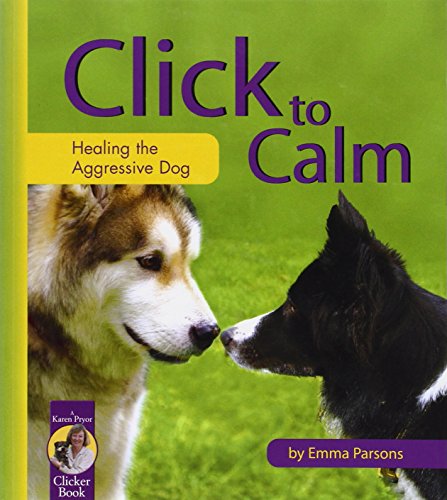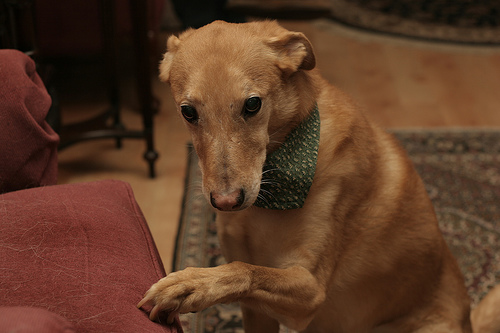
So, following on from my article Get Started Training Your Dog, I thought the next logical step would be to walk you through five basic commands to begin training your dog. These commands will all utilise the clicker I talked about in the last article and requires your dog to be "tuned" to the clicker. In other words, he/she will associate the clicker sound with positive outcomes. As with all dog training, keep sessions short and try to end on a high note: No more than 15 minutes of training at a time, and ending with something your dog is comfortable with. My article regarding the Top 10 Most Intelligent Dog Breeds can help you estimate how long it should take your pet to learn the command. So, without further ado, let's begin!
The most basic command of all, and one every owner and their dog should have in their arsenal from as early an age as possible. This is possibly the simplest command you can teach your dog, so it is a good place to start with training.
Note: For some dogs the movement of the treat won't work as well as others, to move the process along you can give your dog's back a gentle push towards the ground.
There we have it, your first command in the bag, that wasn't so difficult was it?
Now, following on from the "Sit" command, we want our furry friend to lie down on command. To reiterate, try to keep yours and the dog's focus on one command at a time, don't try to teach them this command until they've got "Sit" down to a tee.
Note: The first time for this can be tricky, if you need a helping hand, as you're moving the treat away from their face near the floor you can pick up his front legs and stretch them out. This gives your dog the initial idea of what to do.
With the two most basic commands, "Sit" and "Lie Down" in the bag, we can move onto some slightly more difficult ones. "Stay" is a great command for teaching your dog discipline and self control. You can use it as a bit of a party trick as well to show off, by getting your trusty canine companion to stay, and then throwing treats or toys around the room whilst they sit there patiently, then you can release them to find the treats.
This is actually a fairly easy command to teach your dog, and is pretty useless really, but it's a nice command to have and it's fun! So why not teach them it, it's easy and fun!
See, how simple was that!? It's a bit more difficult trying to get them to give you a certain paw, because they tend to become dominant with one paw and always try to use that. The way I did it was by using my right hand to get his left paw, then using my left hand slightly towards his right leg, and every time he tried to use his left paw I would move my hand away and repeat. Eventually they try to use their other paw in order to get their treat.
Again, this is just a bit of a party trick command to teach your dog. It's also much more difficult than the previous commands. So, let's get started!
That last command will take a bit more time than the rest, like tortoises and turtles, a dog's natural position isn't on their backs. They also won't want to take their eye off the treat. But with patience and a fair amount of practise, it's a great little trick to have!
I hope you enjoyed reading, and the instructions are detailed enough for you. I will leave you with a few small words of advice: Have fun! Don't get stressed with your pet because it's taking longer than expected, it needs to be fun for them too otherwise they won't be interested. If the dog senses you are in a good mood, they will already be happy and much easier to train. But they will also sense a bad mood, which makes them unhappy. Remember, positive feedback is always more helpful than negative feedback in a dog's brain. This is why, when toilet training, we shouldn't be shouting at them for accidents, but we should be praising them when they get it right! The same is true for all behaviours. Good luck!
 25 Heroic Dogs and How They Saved People
25 Heroic Dogs and How They Saved People
People hav
25 Heroic Dogs and How They Saved People
25 Heroic Dogs and How They Saved People
People hav
 Dogs and leg amputation
Dogs and leg amputation
Dogs and leg amputation
Dogs and leg amputation
 My Dog Lunges And Barks At Other Dogs
Walking your dog is a nightm
My Dog Lunges And Barks At Other Dogs
Walking your dog is a nightm
 Top 10 Most Intelligent Dog Breeds
IntroductionFollowing on fro
Top 10 Most Intelligent Dog Breeds
IntroductionFollowing on fro
 Redecorating For Your Dog- How To Make Your Home More Dog Friendly
How To Make Your Home More Dog Friendly
I know that I would
Redecorating For Your Dog- How To Make Your Home More Dog Friendly
How To Make Your Home More Dog Friendly
I know that I would
Copyright © 2005-2016 Pet Information All Rights Reserved
Contact us: www162date@outlook.com